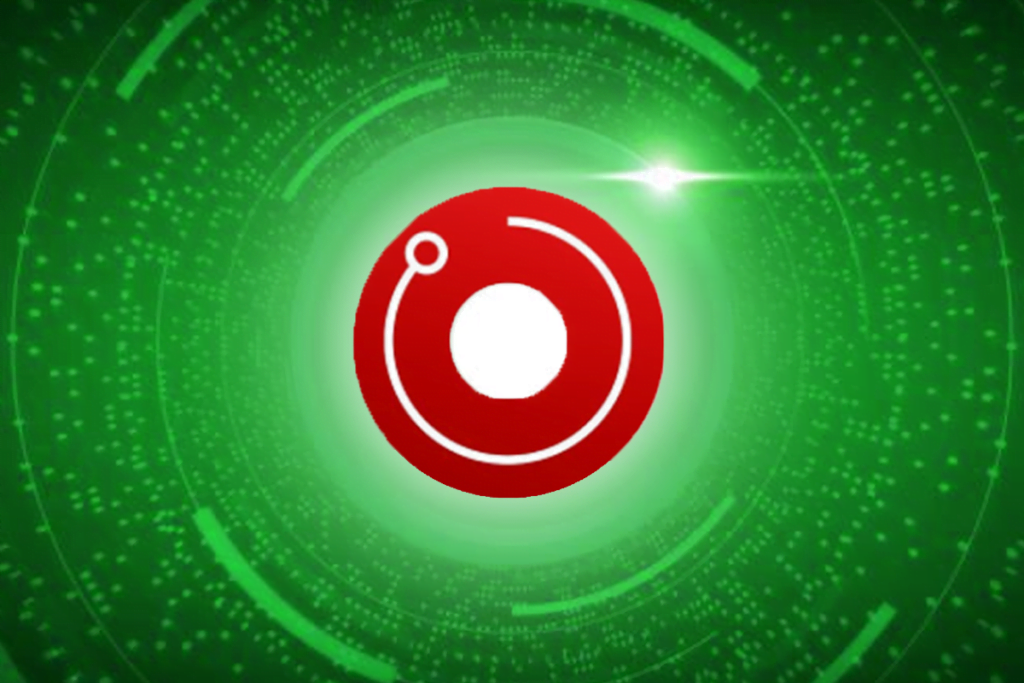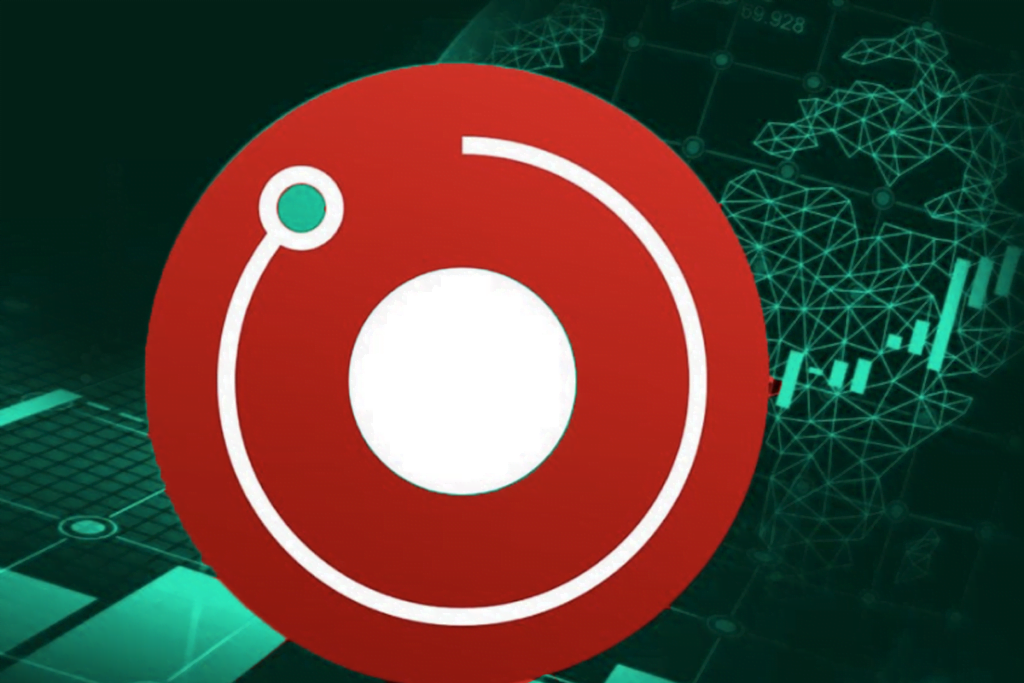Render Network is a project that utilizes blockchain technology and cryptocurrencies to allow people to utilize their unused GPU power for rendering motion graphics and visual effects in projects. As compensation, users are rewarded with Render tokens (RNDR), which serve as the native utility token of the network. Render simplifies the traditional rendering and streaming processes of 3D environments and visual effects by establishing a peer-to-peer (P2P) network where individuals and businesses can access cost-effective and efficient underutilized computational power.
Render Network: Decentralized 3D Rendering
The Render Network facilitates the connection between users seeking rendering services and GPU owners with idle processing power, utilizing Ethereum smart contracts.
This initiative, initiated in 2016, represents Jules Urbach’s second successful venture following the creation of OTOY OctaneRender, a centralized rendering service renowned for its significant speed improvements (10-100 times) in scene graphics and RTX raytracing GPU hardware acceleration. Its contributions to blockbuster movies like Star Wars and Avatar have been remarkable.
On the Render platform, GPU owners employ OTOY to perform their desired rendering tasks. The GPU owner concludes the job once it is completed and verified for quality. Smart contracts utilize the RNDR token to compensate GPU owners for their services.
Consequently, creators can enjoy prompt and cost-effective rendering services. GPU owners, on the other hand, can generate passive income by earning RNDR tokens as rewards for their rendering work.

As early as 2009, Urbach filed a patent for a “token-based pricing mechanism for server-side rendering,” predating the introduction of Ethereum (ETH), the largest blockchain network enabling smart contracts.
However, it was only with Ethereum’s rapid rise in popularity that Urbach could fully realize the potential of the Render Token and Render Network. This is due to the Render project’s utilization of Ethereum’s technology in conjunction with previously mining-focused GPUs for rendering and securely storing information.
Render Network’s Proof-of-Render (PoR) Governance System
The Render Network is constructed on the Ethereum blockchain, leveraging OctaneRender—an application developed by OTOY, the graphics software company powering the Render Network. Ethereum is utilized for data verification and payment processes, while OctaneRender, in conjunction with the open-source ORBX media and streaming framework, facilitates and completes the 3D rendering tasks, enhancing efficiency.
Render implements a multi-tier pricing (MTP) protocol that employs users’ reputation scores to allocate rendering jobs and ensure high-quality services.
Customers, known as Creators, can choose from three tiers: Tier 1 (Trusted Partners), Tier 2 (Priority), and Tier 3 (Economy). Tier 1 services are typically provided by reputable GPU rendering service providers, known as Node Operators, who charge higher fees.
Creators receive reputation scores based on Node Operator feedback, which determines the number of concurrent nodes they can access. In other words, Creators’ reputation scores influence the speed at which their requested tasks are completed.
Similarly, only Node Operators with high reputation scores can process higher-tier jobs that offer more RNDR tokens. Top-rated Node Operators are assigned jobs more swiftly through Render’s automated job-matching algorithm.
This tiered structure forms the foundation of the Render Network’s Proof-of-Render (PoR) governance system, which combines automated and manual inputs to determine user reputation scores. PoR resembles Proof-of-Work (PoW) in that Node Operators utilize computational resources to earn crypto tokens.
However, in the case of Render, Node Operators utilize their computational power to complete complex VFX/3D rendering services instead of solving mathematical puzzles. Render’s pricing algorithms automatically update periodically based on changes in GPU performance, the current price of GPU cloud rendering from other providers, electricity costs, and network supply and demand patterns.
Each Render Network user possesses a unique identifier associated with their OctaneRender account, which incorporates Know-Your-Customer (KYC) requirements to prevent fraud and duplicate accounts.
Once a job is active, Creators can monitor their Node Operators’ rendering progress in real time using OctaneRender, identifying any processing irregularities before the job’s completion. Creators have the ability to review and score Node Operators’ final deliverables frame by frame or in batches, and their feedback influences the Node Operators’ scores.
Additionally, the Render Network automatically evaluates active jobs by comparing a Node Operator’s computational potential with a job’s requirements, penalizing inefficient Node Operators and reassigning their jobs if significant disparities exist between the Node Operator’s OctaneBench service potential and the actual output quality.

How To Use Render Network
The Render Network functions as an automated marketplace where content creators, referred to as “Creators,” can submit GPU-based rendering tasks to be completed by a decentralized network of GPU service providers known as “Node Operators.”
The operational process for Render users is as follows:
Job Creation: Creators are required to submit their job in ORBX file format using OctaneRender or a compatible plugin/integration. They define key parameters such as graphic resolution, output format, and sample size. Creators can also select the desired service tier based on the priority level of their job and the on-chain performance benchmarks and reputation scores of Node Operators.
Job Upload: Once a job is uploaded through Render’s OctaneRender web portal, the Creator’s assets are divided into encrypted and hashed individual files. This process ensures end-to-end traceability and facilitates the detection and prevention of malicious behavior through the Render crypto protocol. The job requirements and payment terms are then sent to a smart contract that shares the relevant details across the Render Network.
Job Assignment: Render’s multi-tier pricing (MTP) protocol automatically assigns suitable Node Operators to jobs based on the reputation scores of market participants and the specifications provided by Creators. When joining the network, Render evaluates the performance capabilities of Node Operators and incorporates this information into its node benchmarking and assignment process.
Job Completion: Node Operators utilize OctaneRender to process their assigned jobs, providing proof of work through their computational tasks. Each Node Operator’s contributions are associated with their unique OctaneRender identifier, and job submission and scoring are conducted through OctaneRender as well.
Deliverable Verification: Creators can monitor the real-time progress of their Node Operators’ rendering and identify any abnormalities or misconduct before job completion. Previews of the rendered content are watermarked until the job is confirmed and the Creator pays for the completed work. Additionally, Node Operators’ outputs are encrypted.
Payment Completion: Render holds all payments in escrow during the rendering process, and RNDR tokens are released to Node Operators once Creators manually verify satisfactory job completion. The Render Network receives a small percentage of RNDR tokens as compensation for facilitating the transaction and operating the network. This percentage ranges from 0.5% to 5% of the total RNDR tokens required for processing the job, depending on the current levels of GPU supply and demand. Creators can then directly download or share their rendered assets through OctaneRender.

Tokenomics
The project’s DAO has unanimously voted to adopt a new tokenomics model known as the burn and mint equilibrium model. Under this model, instead of users paying for services rendered in RNDR tokens, they will now make payments in USD, with the corresponding value of RNDR tokens being burned, resulting in a continuous reduction of the token supply.
When a user pays in USD and an equivalent value of RNDR tokens is burned, an equal amount of “Render Credits” will be minted and issued to track the jobs conducted.
Node operators on the Render Network will be rewarded based on their availability to complete jobs and the number of jobs they successfully undertake during the network’s current epoch.
To access more article: cryptodataspace.com















Leave a comment